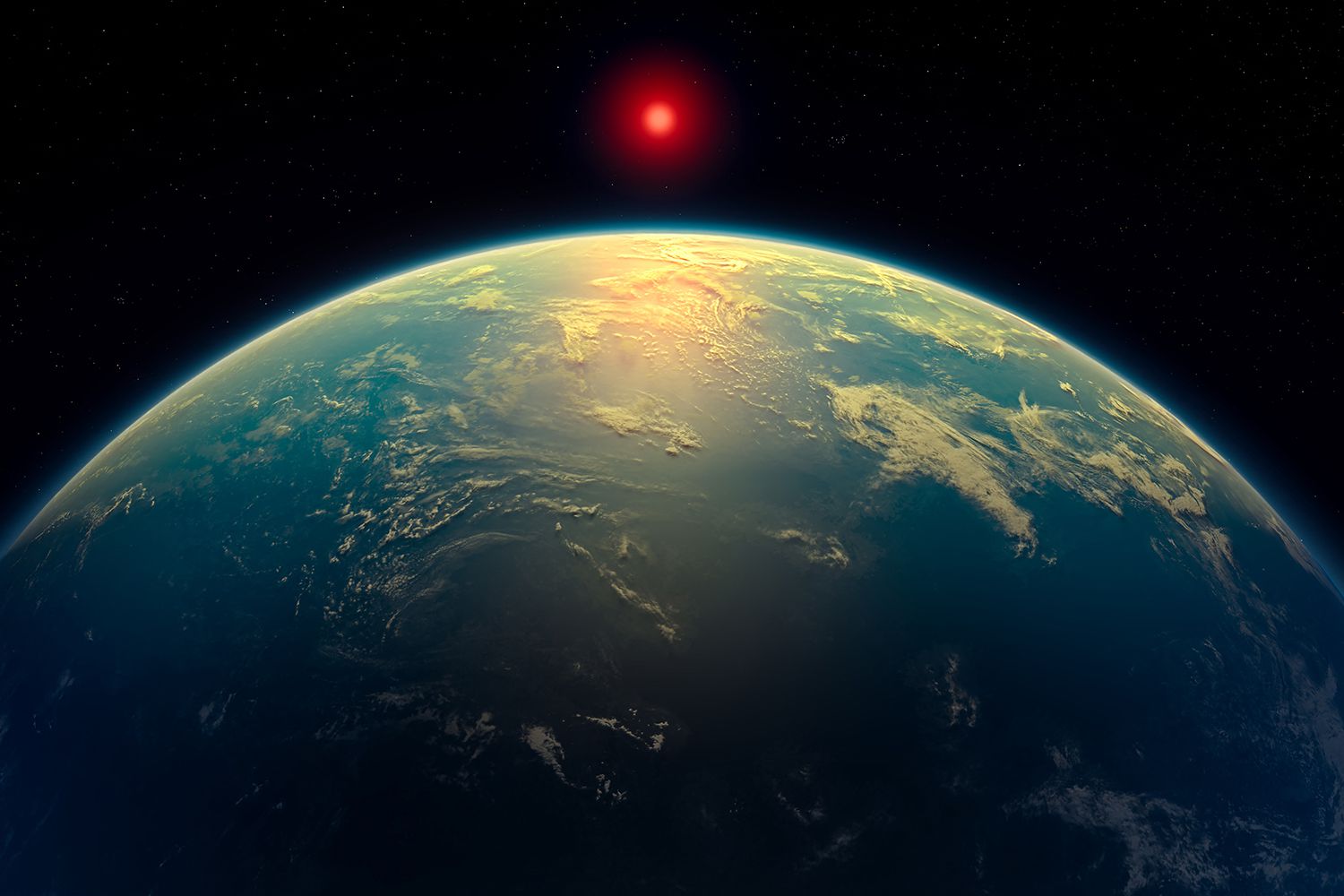Physical Address
304 North Cardinal St.
Dorchester Center, MA 02124
Physical Address
304 North Cardinal St.
Dorchester Center, MA 02124

:max_bytes(150000):strip_icc():format(jpeg)/K2-18b-super-earth-041725-1-dad89c93a1f941e883bea98512249503.jpg)
Researchers believe that they may have discovered evidence of life on a planet 700 trillion miles from the earth.
K2-18B, a planet more than twice as large as the earth, which revolves a distant red sun, is at the center of a growing debate as a researcher at Cambridge University’s Institute of Astronomy Dissect Early evidence that supports life’s claim there.
Led by Professor Nikku Madhusudhan, researchers have analyzed data from NASA: s James Webb Space Telescope – An instrument of $ 10 billion that was launched in addition to the atmosphere in December 2021 and has taken breathtaking photos of deep space.
M. Kornmesser/Esa/Hubble/AFP via Getty
The data has provided insight into the atmosphere of the planet, resulting in the new hypothesis, according to BBC.
They have found strong evidence that the atmosphere of the planet seems to contain “the chemical signature for at least one of two molecules associated with life.” The BBC reported that on earth these two gases are produced by marine phytoplankton and bacteria.
The outlet noted that there has previously been proof of the molecules in K2-18B’s atmosphere. But this time the statement is much stronger, and the researchers now believe that there is a 99.7% chance of life on the planet.
Qai Publishing/Universal Images Group via Getty
“This is the strongest proof but there may be life out there. I can realistically say that we can confirm this signal within one to two years,” Madhusudhan told the BBC. “Decades from now on we can look back at this time and admit that it was when the living universe came within reach.”
Madhusudhan noted that the level of gas on K2-18B is “thousands of times higher than we have on earth”, which means it can be “Mylting of Life.”
“If we confirm that there is life on K2-18B, it should in principle confirm that life is very common in the galaxy,” he added.
Never miss a story – register for People’s free daily newsletters Keeping up to date on the best of what people have to offer, from celebrity news to compelling stories of human interest.
Alami
While 99.7% security seems impressive, the scientific community will not consider this as proof of life until the team can say that they are 99,99999% positive with their research.
This means that this is still an early discovery that will need further research. Even Madhusudhan told the BBC that there is still more work to do.
Their results have resulted in further questions. Professor Catherine Heymans told the BBC that researchers will have to answer “The question of what is the origin of this gas.”
“On earth it is produced by microorganisms in the sea, but even with perfect data we cannot say for sure that this is of a biological origin in a foreign world because lots of strange things happen in the universe and we do not know what other geological activity can happen on this planet that can produce the molecules,” she explained.
Jody Amium/AFP via Getty
People Puzzler Crossword is here! How fast can you solve it? Play now!
Professor Oliver Shortte also told the outlet that JWST, although it is better than anything that scientists have used before, is still difficult to decipher.
“Everything we know about planets that revolve around other stars come from the small amounts of light that look at their atmospheres. So it is an extremely difficult signal that we have to read, not just for signs of life, but everything else,” said Shörtle.
This leads to questions about “the structure of the planet,” he said.
It is possible that K2-18B can wear water, or the planet can also be made of molten stone. Dr. Nicolas Wogan has even assumed that it is actually “a mini gas giant without surface”, according to the BBC.